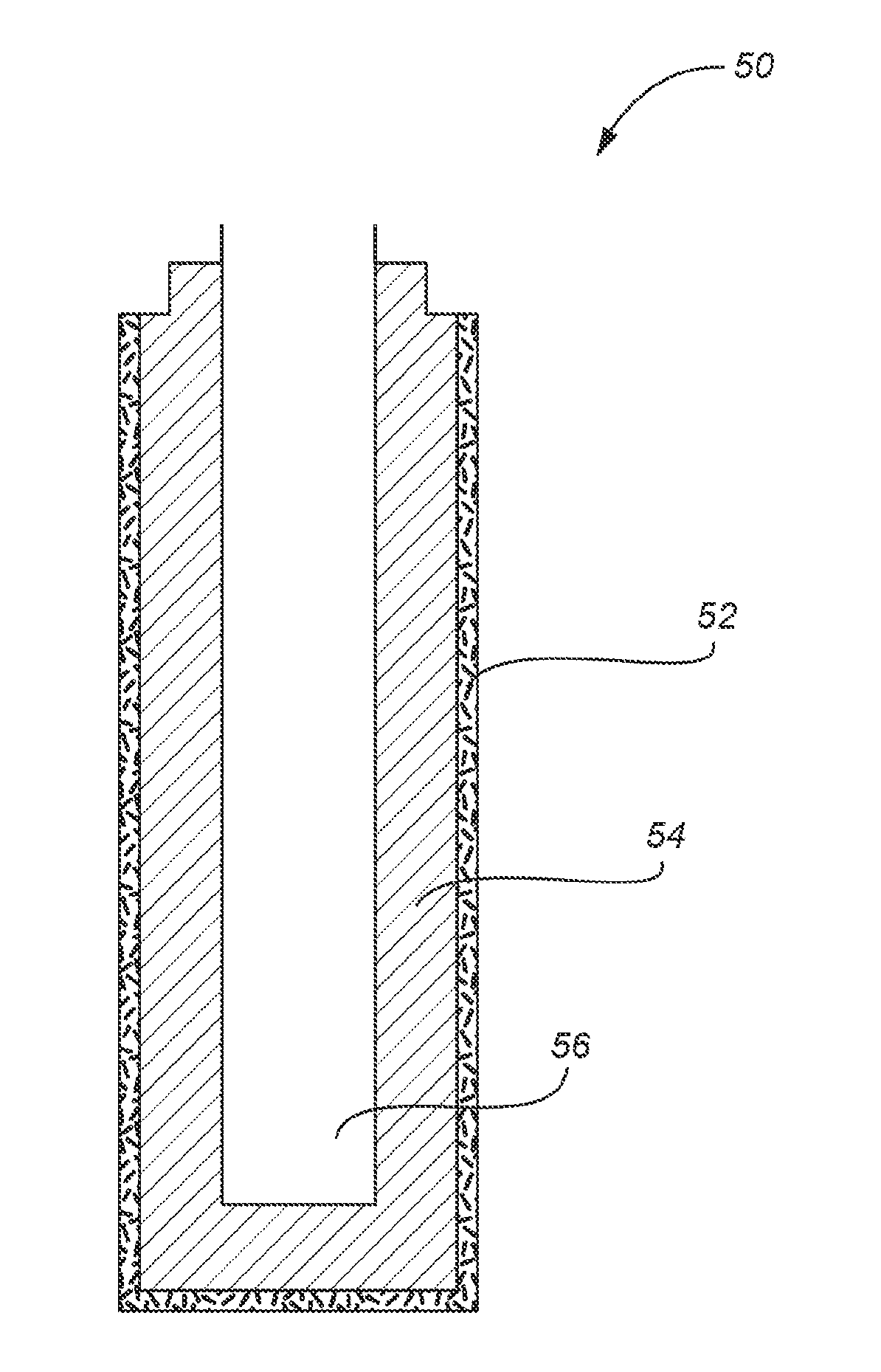Hydrophobic porous non mechanical valve for medical suction device
a non-mechanical valve and hydrophobic technology, applied in the field of hydrophobic porous non-mechanical valves, can solve the problems of premature shut-off of vacuum system, and inability to function well in certain applications, so as to reduce the loss of operating room time, prevent clogging and premature shut-off, and reduce the effect of patient safety
- Summary
- Abstract
- Description
- Claims
- Application Information
AI Technical Summary
Benefits of technology
Problems solved by technology
Method used
Image
Examples
example 1
Dual Components Products with Two Regions with Different Pore Sizes
[0108]Material was loading into first part of the mold cavity (with the shape of FIG. 1) by putting the mixture of UHMWPE particles (average particle size of 150 microns) and carboxymethylcellulose (CMC) particles in the mold, evenly distributing it and then vibrating it. Next, the mixture of HDPE (average particle size of 250 microns) and CMC particles with average particle size of 120 microns was placed on the second part of mold cavity. Both processes were vibrated with pneumatic vibrators from 20-40 seconds at 20-40 psi. (1.38 to 2.76 bar).
[0109]The material was heated in the cavities up to 170° C. for about 15 minutes. Once the mold achieved 170° C., it was kept at this temperature for 10 seconds. The mold was cooled to room temperature and parts were removed from the mold. The resulting parts have two distinguishable components or regions, one component has a pore size range of 20 to 40 microns and another comp...
example 2
Non-Mechanical Valve with Self-Sealing Internal Surface and Hydrophobic External Surface
[0111]The mixture of UHMWPE particles (average particle size of 150 microns) and CMC particles was loaded in the mold cavity, evenly distributed and then vibrated. The material was heated in the cavities up to 170° C. for about 15 minutes. Once the mold achieved 170° C., it was kept at this temperature for 10 seconds. The mold was cooled to room temperature and parts were removed from the mold. The resulting parts had a pore size range of 20 to 40 microns. This self-sealing part was used as an internal part of the non-mechanical valve.
[0112]Next, the self-sealing part made above was put into another mold cavity with 1 mm larger diameter and 0.5 mm deeper. UHMWPE (average particle size of 150 microns) particles were filled in the gaps between the self-sealing part and the mold wall, and mold was vibrated with pneumatic vibrators from 20-40 seconds at 20-40 psi. (1.38-2.76 bar)
[0113]The material wa...
example 3
Non-Mechanical Valve with Fluorinated Polymer Coating on Our Surface
[0114]A mixture of HDPE particles (average particle size of 150 microns) and carboxymethylcellulose (CMC) particles was loaded in the mold cavity, evenly distributed and then vibrated. The material was heated in the cavity up to 170° C. for about 15 minutes. Once the mold achieved 170° C., it was kept at this temperature for 10 seconds. The mold was cooled to room temperature and parts were removed from the mold. The resulting parts had a pore size range of 20 to 40 microns. The part had a cylindrical shape, 42 mm in length, 13.5 mm in diameter, and a wall thickness of 3 mm. The parts had an average air flow of about 50 standard cubic feet per hour at −1.65 inches of Hg. (24 liter per minute at −56 mbar).
[0115]The external surface part was then spray coated with 2% FluoroPel solution (Cytonix, Beltville, Md.). The coated part was allowed to dry at room temperature. The water contact angle was over 90 degrees at the ...
PUM
 Login to View More
Login to View More Abstract
Description
Claims
Application Information
 Login to View More
Login to View More - R&D Engineer
- R&D Manager
- IP Professional
- Industry Leading Data Capabilities
- Powerful AI technology
- Patent DNA Extraction
Browse by: Latest US Patents, China's latest patents, Technical Efficacy Thesaurus, Application Domain, Technology Topic, Popular Technical Reports.
© 2024 PatSnap. All rights reserved.Legal|Privacy policy|Modern Slavery Act Transparency Statement|Sitemap|About US| Contact US: help@patsnap.com










